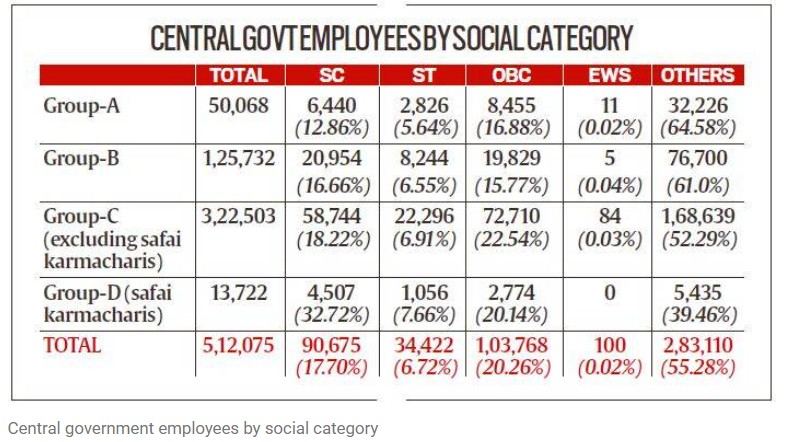ForumIAS announcing GS Foundation Program for UPSC CSE 2025-26 from 19 April. Click Here for more information.
ForumIAS Answer Writing Focus Group (AWFG) for Mains 2024 commencing from 24th June 2024. The Entrance Test for the program will be held on 28th April 2024 at 9 AM. To know more about the program visit: https://forumias.com/blog/awfg2024
Contents
Source: The post is based on the article “Explained: Sub-categorising OBCs” published in “Indian Express” on 8th July 2022.
What is the News?
The Centre extended the tenure of The Commission to Examine Sub-categorisation of Other Backward Classes (OBCs) headed by Justice G Rohini, former Chief Justice of Delhi High Court. The present extension is provided until January 31 next year.
| Must read: Union Cabinet approves Commission on sub-categorisation of OBCs |
What is sub-categorisation of OBCs?
This is to create sub-categories within the larger group of OBCs for the purpose of reservation. OBCs are granted 27% reservation in jobs and education under the central government.
There is a perception that only a few affluent communities among the over 2,600 included in the Central List of OBCs have secured a major part of the 27% reservation. Hence, the sub-categorization aims to ensure “equitable distribution” of representation among all OBC communities.
To fulfil that, the government constituted Rohini Commission on October 2, 2017.
| Read more: Judgment on the eligibility of Horizontal reservation candidates |
About the commission’s extensions and progress
The Commission was given 12 weeks to submit its report but has since been given 10 extensions. According to the RTI query, the National Commission for Backward Classes (NCBC) had said that until December 2020, over Rs 1.92 crore had been spent on the Commission including salary, consultant fees and other expenses.
In 2019, the Commission wrote that it is ready with the draft report on sub-categorisation. The Commission now began studying the list of communities in the central list.
The major challenge faced by the commission is the absence of data for the population of various communities to compare with their representation in jobs and admissions.
| Read more: Reservation Policy in India – Explained, Pointwise |
What are the findings of the commission so far?
| Read here: Findings of Rohini Commission on Sub-Categorisation |
What is the extent of OBC recruitment in central jobs?

According to data tabled in Parliament, the total number of Group A to Group C employees (including safai karmacharis) was 5.12 lakh.
Further, “Out of 91 Additional Secretaries, the number of officers belonging to SC/ST and OBC communities are 10 and 4 respectively and out of 245 Joint Secretaries, the number of officers belonging to SC/ST and OBC communities is 26 and 29 respectively in various Ministries/Departments under Central Staffing Scheme.”
These data cover 43 departments and government offices including the Cabinet Secretariat, UPSC and Election Commission, but excluding the largest central government employers such as Railways and Department of Posts.
| Read more: Caste based census in India – Explained, pointwise |




